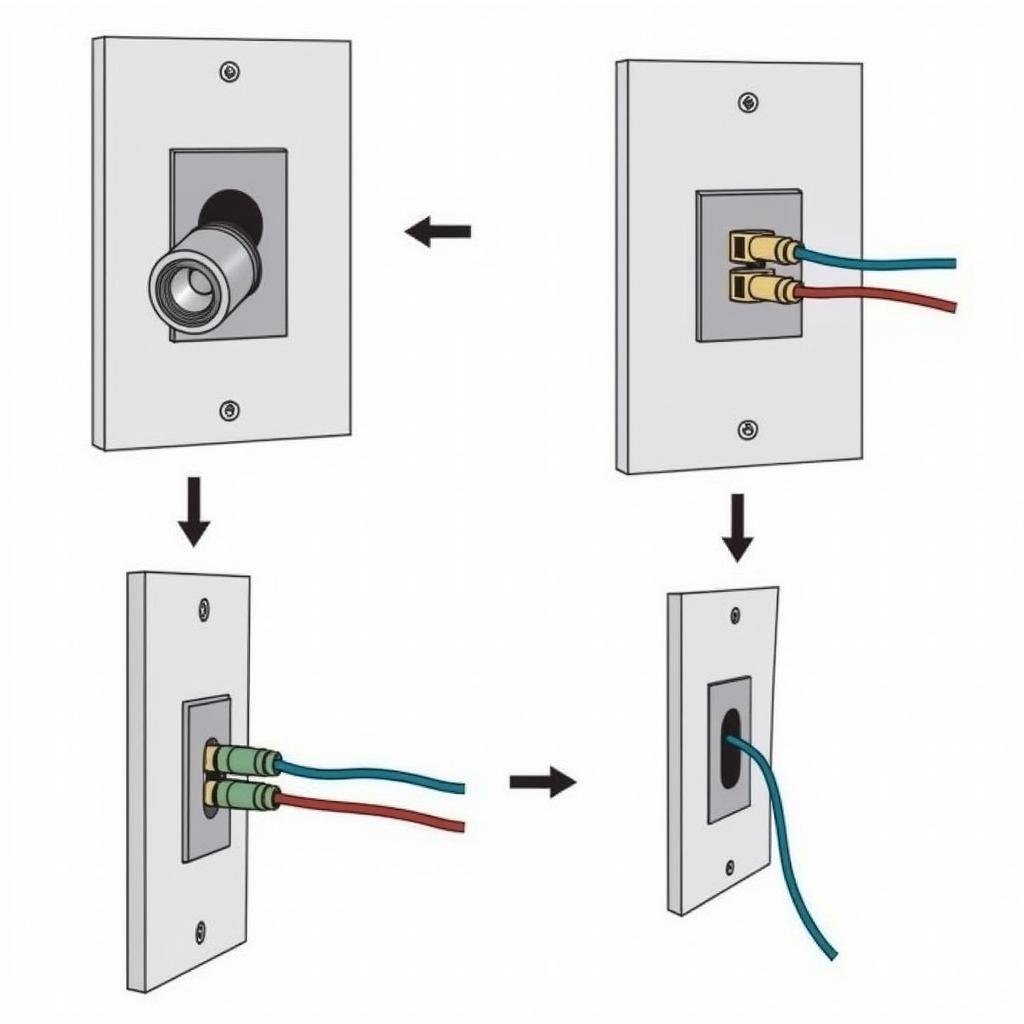Understanding Speaker Jack Plates: A Comprehensive Guide
October 10, 2024Speaker Jack Plates, those often overlooked metal plates with holes for your speaker cables, might seem like a small detail in your audio setup. But don’t underestimate their importance! They play a crucial role in maintaining a clean and organized audio system while ensuring optimal sound quality.
What is a Speaker Jack Plate?
A speaker jack plate, also known as a speaker wall plate or a speaker terminal plate, provides a convenient and aesthetically pleasing way to connect your speakers to your audio system. Instead of having loose wires hanging out of your wall, the jack plate offers a clean and professional finish. It typically features binding posts or RCA jacks, allowing for secure and reliable connections.
Why Use a Speaker Jack Plate?
There are several benefits to incorporating speaker jack plates into your audio setup:
- Improved Aesthetics: Say goodbye to messy wires protruding from your walls. Jack plates provide a polished and professional look to your home theater or audio setup.
- Enhanced Organization: With clearly labeled connections, identifying and managing your speaker wires becomes effortless.
- Reduced Signal Interference: Jack plates can minimize signal interference and noise by providing a dedicated pathway for audio signals.
- Increased Durability: These plates protect your speaker wire connections from wear and tear, ensuring long-lasting performance.
Types of Speaker Jack Plates
Choosing the right speaker jack plate is crucial for compatibility and optimal performance. Here are some common types:
- Banana Plug Plates: These plates feature banana plug connectors, known for their ease of use and secure connection.
- Binding Post Plates: Offering a highly reliable and versatile connection, binding post plates accommodate bare wire, spade connectors, and pin connectors.
- RCA Jack Plates: Primarily used for subwoofers or powered speakers, RCA jack plates utilize the familiar red and white connectors for audio signals.
 Types of speaker jack plates
Types of speaker jack plates
How to Choose the Right Speaker Jack Plate
Consider the following factors when selecting a speaker jack plate:
- Type of Connectors: Ensure the plate’s connectors match those on your speakers and amplifier or receiver.
- Number of Speakers: Determine the number of speakers you want to connect and choose a plate with the appropriate number of terminals.
- Wall Material: Consider your wall’s material (drywall, concrete, etc.) to choose a plate and installation method that suits your needs.
- Aesthetics: Select a plate style and finish that complements your room’s decor and personal preferences.
Installing a Speaker Jack Plate
While installation processes may vary, here’s a general overview:
- Turn off the power: Before working with any electrical wiring, switch off the power to the circuit at the breaker box.
- Prepare the wall: Mark the location for the jack plate and use a drywall saw or appropriate tool to create the opening.
- Connect the wires: Feed the speaker wires through the opening and connect them to the corresponding terminals on the jack plate, ensuring proper polarity (positive to positive, negative to negative).
- Secure the plate: Insert the jack plate into the wall opening and secure it with the provided screws or mounting brackets.
 Steps to install a speaker jack plate
Steps to install a speaker jack plate
Maintaining Your Speaker Jack Plates
For optimal performance and longevity, keep these maintenance tips in mind:
- Regular Inspection: Periodically check the connections for any looseness or signs of wear.
- Cleaning: Dust and debris can accumulate on the plates, so use a soft cloth to wipe them clean.
- Avoid Moisture: Excessive moisture can damage the connections, so keep the plates dry and away from direct water sources.
Conclusion
While often overlooked, speaker jack plates are essential components for a clean, organized, and high-performing audio system. By understanding the different types, installation procedures, and maintenance tips, you can ensure optimal sound quality and a polished look for your audio setup. Now, sit back, relax, and enjoy the immersive audio experience!